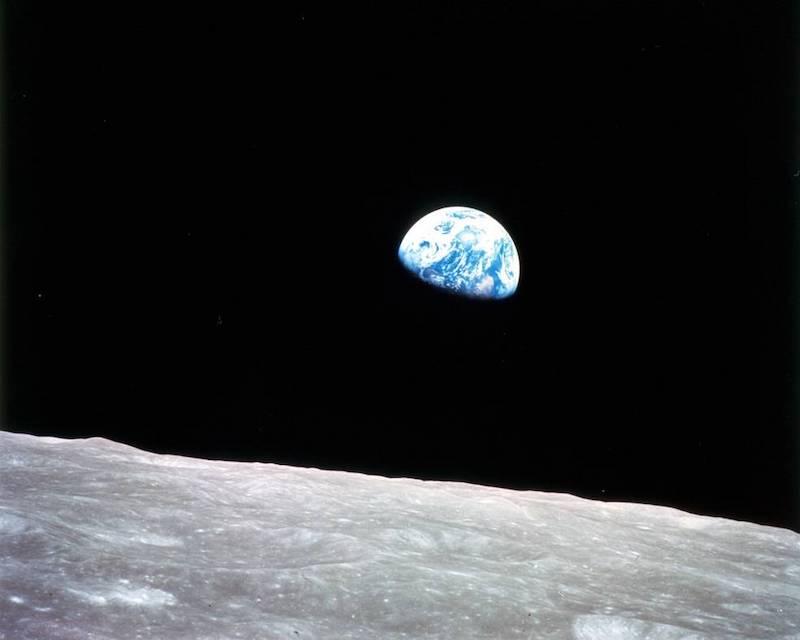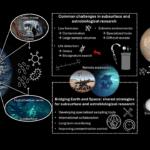Now Reading: Are there liquid water brines on Mars? New study casts doubt
-
01
Are there liquid water brines on Mars? New study casts doubt
Are there liquid water brines on Mars? New study casts doubt


- Liquid water can’t exist for long on Mars’ surface. The atmosphere is far too thin and cold. But small amounts of brines – highly salty water – possibly could.
- Brines could form under permafrost, or even help explain some of the unusual dark streaks on steep slopes.
- But now a new study says brines are unlikely to be found on Mars, although it doesn’t completely rule them out.
Are there liquid water brines on Mars?
The surface of Mars is extremely dry, with no rivers, lakes or even puddles. The air is just too thin and cold for liquid water to be stable. But what about brines? Could brines – very salty water – exist on Mars? Perhaps in permafrost, or in the mysterious dark streaks seen to recur on steep slopes? Scientists have long debated their existence on this neighboring planet. And we still don’t know for sure. But on December 16, 2024, researchers at the University of Arkansas said that even small amounts of brine would have difficulty forming in current Martian conditions. Their study didn’t completely rule out brines on Mars. But, these researchers said, finding very salty water on Mars’ surface won’t be easy, even if such a thing exists.
The researchers published their new peer-reviewed results in Proceedings of the National Academy of Sciences on December 16, 2024.
Recurring slope lineae and permafrost
Why speak of salty water on Mars at all? One place where scientists have thought brines might exist are recurring slope lineae, weird dark streaks sometimes found on sun-facing slopes on Mars. They keep repeating in the same places. Could it be salty water that periodically comes to the surface?
Another suggestion for brines on Mars centers around permafrost, such as that seen in the patterned ground at the Mars Phoenix landing site.
But the new paper throws cold water on both possibilities for brines.
The dark streaks of recurring slope lineae are seen more often on steep Martian slopes in warmer seasons. They fade in colder seasons. They do look a lot like streams of water. If they are, they would need to be briny in order to persist as long as they do.
But – as some other papers have also suggested – the new study said the streaks are most likely flows of sand and dust. Vincent Chevrier, one of the two authors, is an associate research professor at the University of Arkansas’ Center for Space and Planetary Sciences. He said:
I wanted to write this paper for a very long time, because I think there is a lot of confusion, a lot of misunderstanding, and a lot of erroneous interpretations of what the research papers are saying about the state of liquid water on Mars.
And how about the regions under Martian permafrost? It’s been suggested that small pools of brine might form beneath the Mars ice. This happens on Earth. Indeed, there are striped and polygonal features in the permafrost on Mars that could be attributable to brines.
Again, however, the authors concluded there are probably too many limiting factors for the brines to exist. The researchers said that the relatively low amounts of the best types of salts, the pressure of water vapor and locations of ice …
… strongly limit the abundances of brines on the surface or shallow subsurface.
Is Mars’ surface inhospitable for liquid water?
We know there used to be a lot of water on Mars’ surface billions of years ago. There are ancient riverbeds, evidence for lakes, plus growing evidence for past oceans. The Mars rovers Opportunity and Spirit also found evidence of possible ancient hydrothermal systems as well as other water.
But today, Mars’ atmosphere is too cold and thin to sustain liquid water on the surface. In fact, the atmosphere is less than 1% as thick as Earth’s. Any water that might appear would quickly freeze or boil away in the extremely tenuous atmosphere, even in the deepest canyons.
What about brines on Mars?
Scientists have hypothesized that brines could still occur on Mars. Brines are water with a high salt content, like seawater. The salt can help keep the water from freezing or evaporating. Brines can freeze at much lower temperatures than pure water. We also know there are abundant salts on Mars’ surface. Perchlorate salts in particular are common on Mars. A calcium perchlorate brine could remain liquid until the temperature reached -75 degrees Celsius (-100 F). And at Mars’ equator, the average temperature is -50 degrees Celsius (-58 F). So brines should be theoretically possible.
Indeed, in 2015, NASA said that results from the Curiosity rover supported the possibility of brines in the soil. Perchlorates could absorb water vapor from the atmosphere and allow brines to form in the soil.

Could brines on Mars support life?
The researchers also noted that even if brines did form, they would …
… remain highly unhabitable by terrestrial standards.
Chevrier said:
Despite our best efforts to prove otherwise, Mars still remains a cold, dry and utterly unhabitable desert.
But the paper does mention this caveat:
Despite these drawbacks and limitations, there is always the possibility that Martian life adapted to those brines and some terrestrial organisms could survive in them, which is a consideration for planetary protection because life on Mars might exist today in that case. Hence, detecting brines in situ remains a major objective of the exploration of the red planet.

What about the Mars Phoenix lander?
NASA’s Mars Phoenix lander touched down near the north pole of Mars on May 25, 2008. Exposed water ice could be seen in some of the trenches it dug in the ground. The ice evaporated within four days.
But something else caught scientists’ attention as well: small droplets of what looked like droplets of liquid water on one of the lander’s legs. Scientists hypothesized that small amounts of briny water splashed up onto the leg during landing.
Some other scientists, however, thought that small globs of frost or condensed water vapor were more likely. So even now, the jury is still out on that one.
Even if there aren’t any brines on Mars, there is still growing evidence for them elsewhere in the solar system, such as the dwarf planet Ceres and the large asteroid Vesta. Where else might we find them?
Bottom line: Scientists have hypothesized how liquid water brines on Mars could occur. A new study, however, suggested it is more unlikely than previously thought.
Source: The elusive nature of Martian liquid brines
Read more: Dark streaks on Mars may be caused by salts and melting ice
Read more: Are mysterious flows on airless worlds made by salty water?
The post Are there liquid water brines on Mars? New study casts doubt first appeared on EarthSky.
Stay Informed With the Latest & Most Important News
Previous Post
Next Post
-
 01From Polymerization-Enabled Folding and Assembly to Chemical Evolution: Key Processes for Emergence of Functional Polymers in the Origin of Life
01From Polymerization-Enabled Folding and Assembly to Chemical Evolution: Key Processes for Emergence of Functional Polymers in the Origin of Life -
 02Panasonic Leica Summilux DG 15mm f/1.7 ASPH review
02Panasonic Leica Summilux DG 15mm f/1.7 ASPH review -
 03Two Black Holes Observed Circling Each Other for the First Time
03Two Black Holes Observed Circling Each Other for the First Time -
 04How New NASA, India Earth Satellite NISAR Will See Earth
04How New NASA, India Earth Satellite NISAR Will See Earth -
 05And Thus Begins A New Year For Life On Earth
05And Thus Begins A New Year For Life On Earth -
 06Astronomy Activation Ambassadors: A New Era
06Astronomy Activation Ambassadors: A New Era -
07SpaceX launch surge helps set new global launch record in 2024


















